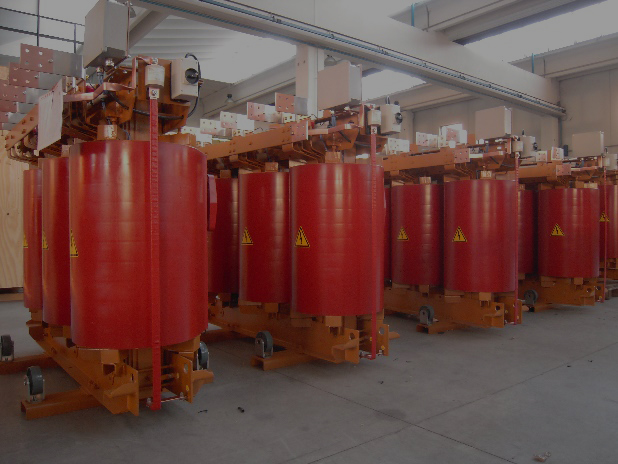Cast-resin and H class dry-type transformers
Cast resin : up to 20 MVA with Insulation level up to 42 kV
H class : up to 4 MVA with Insulation level up to 24 kV
Ocrev has been manufacturing this type of transformer since 1979.
Until now more than 10.000 different units have been manufactured and installed all over the world.
TAT/R and ETAT/R (EcoDesign) transformers series are manufactured by means of modern equipment and subjected to strict control procedures.
After individual testing, each MT side winding is casted under vacuum in epoxy resin.
The versatility of our production apparatus allows to obtain a wide range of resin mixtures characterised by different types of fillers so as to satisfy the different enviromental and climatic classes and self-extinguishing requirements as well.
Resin Glass Transition is measured by means of Differential Scanner Calorimeter after hardening.
MAGNETIC CORE
It is made from cold roller grain oriented steels with joints at different graduation.
Cutting, mounting and check of correct losses values are carried out at our works.
Since these procedures are performed directly by us these components are promptly available; moreover we can obtain noise level values lower than those prescribed by DIN and NEMA standards.
WINDINGS
HV side consist of more coils generally made of aluminium strip insulated by interposition of polyester film. The winding frame is then casted in resin under vacuum following a special treatment whose result is a winding free of any partial discharge.
LV side is normally manufactured by using aluminium tape whose height is equal to the whole HV coil one so as to eliminate any possible axial electrodynamic stress which can occur under short circuit condition. Coils insulation method is carried out by using materials impregnated under vacuum with H class varnish.
As an alternative insulation can be made by epoxy resin casting that is to say by following the same procedure as per HV side.
INSULATION CLASSES
“F” for standard transformers
(100 K temperature rise)
“B” on request
(80 K temperature rise)
“H” on request
(125 K temperature rise)


